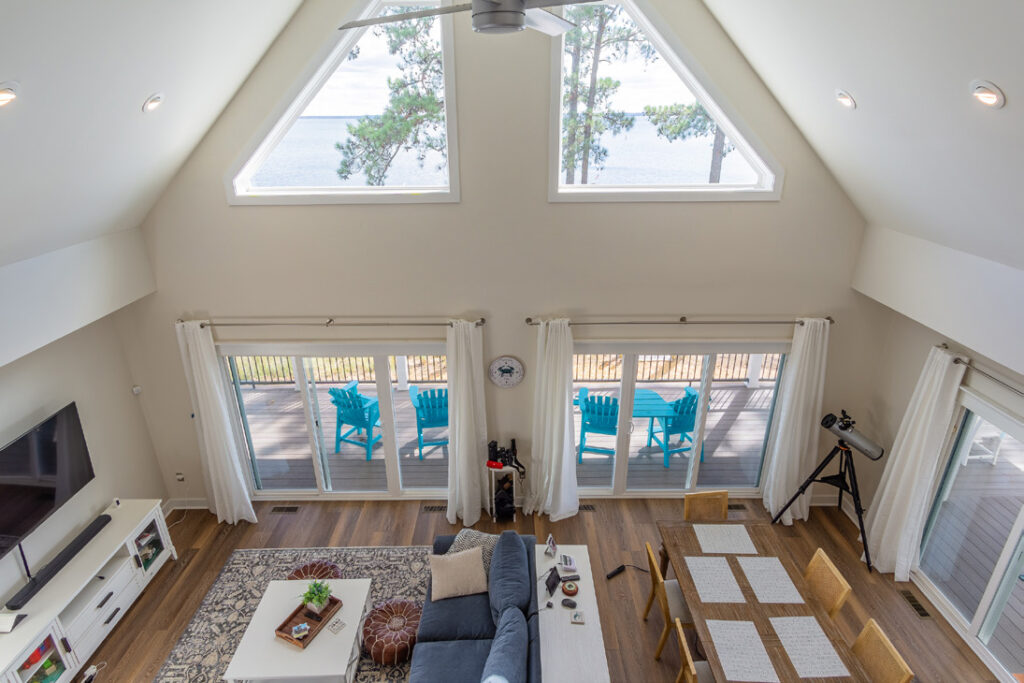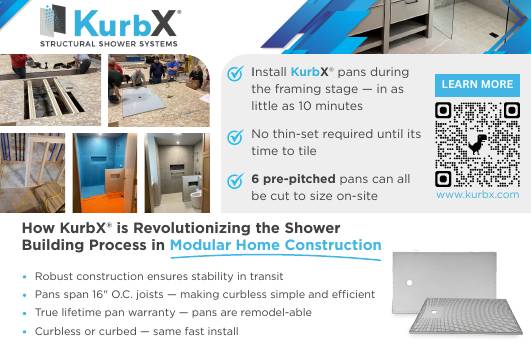It’s not labor, materials, or crane costs — it’s scope confusion. One misunderstanding can lead to surprise costs and unhappy clients.
- A misreading of factory plans and scopes is death by a thousand cuts. It can drain thousands from your project before you realize it.
- Learn to decode phrases like “by others on-site” to spot hidden costs. Understand which factory finishes are included and which are your responsibility.
- Accurately compare modular bids by ensuring scope, finishes and quality standards match before assuming one factory is cheaper.
For general contractors new to modular construction, one potential pitfall is failing to clarify the scope of work on the project. That is, who’s responsible for what, where it’s being done (in the factory or on-site), and what, exactly, is and is not included from the manufacturer. Lack of specificity can cause prices to spike.
“Where so many modular projects fail is the scope-of-work breakdown,” says Eric Schaefer, Chief Business Development Officer at Fading West, a modular manufacturing and development company based in Buena Vista, Colorado. “You need to know what’s happening in the factory, and what needs to happen on the site. If the GC and the factory are not in perfect alignment, then there’s potential for being overcharged.”
Schaefer offers an example: “Suppose the GC charges the customer $5000 per house for electric hook-up. That sounds reasonable. But our hook-up between two boxes is a simple plug-in, so there’s actually less than $500 worth of work required. I’m not blaming the GC — it’s just that a lack of communication means the customer has been overcharged by $4500, which adds up.”
Such problems aren’t limited to electrical hook-ups, of course. “How much of the roof is done in the factory? Are the trusses sent to the site? If so, who’s in charge of that?” Schaefer asks. “Everybody needs to be communicating well from the beginning. If not, there are all sorts of ways a project can go south.”
In the affordable housing sector, where Fading West does a lot of work, even small cost overruns can have outsized consequences. “If an attainable housing project goes over by even $5,000 or $10,000, that can raise overall costs enough that a teacher now can’t get a mortgage on their first home,” Schaefer says. “And then we’ve failed.”

Read the Plans
John Garrett is the Owner and President of Virginia Building Solutions, headquartered in Tappahannock, Virginia. “Most builders should be able to understand the plans they get,” he says. “But they also need to understand exactly what they’re getting from the manufacturer. That’s key. I’ve seen builders get a product and then say, ‘What do I do now?’ The plans are detailed, but they don’t always specify how to put everything together. And the plan doesn’t say what the builder’s not getting.”
Ken Semler is President and CEO of Impresa Modular, and President of Impresa Modular Franchising, both based in Martinsburg, West Virginia. (Semler is also publisher of this magazine.) He’s worked with many GCs new to modular and finds that most scope issues begin with a misreading of factory plans.
“When you get the plan from the factory, you’ll typically see phrases like ‘on-site by others’ or ‘by builder on-site,’” he explains. “If you see that, this means you. The GC is responsible for it, and it’s not from the factory.”
But what those phrases actually entail can vary. “The factory may be providing the materials, but not the labor — or they may not be providing anything,” Semler says. “You could see a porch ghosted in on the plan just to represent it, but they’re not providing any part of that. So now you might have to spend $2,000 more simply because you misread the plan or didn’t understand what the factory was doing.”
This lack of clarity, especially for GCs new to modular, can lead to what Semler calls “death by a thousand cuts.” He says, “You don’t necessarily have one item that costs you $5,000, but you’ve got ten that cost you $500.” He uses the example of fascia and soffit. “Does the factory install all of those details or just part. If so, which part? That might be another $300 to $500 of cost you miss,” he says.
Scrutinize the Details
Even a GC completely new to modular will likely know enough to ask about transportation and craning. Garrett says that “Hiring a crane operator is usually the responsibility of the builder, not the manufacturer. Some manufacturers do offer an installation service, though. Some will have delivery included, some will not. Those things will be listed on the order.”
But a trickier scope-related issue is understanding the level of factory finish — what the manufacturer delivers fully completed, partially prepped, or untouched.
The fascia example above is just one of many. “Some factories won’t install tile, but they’ll prep for it. Others will install the tile, but they won’t grout it,” Semler explains. “Then there’s plumbing. Are they doing the laterals underneath, or just the drops through the floor? For HVAC, are they installing ductwork and furnaces? Are they prepping for an exterior compressor?”
It’s important not to make assumptions about the answers to these questions. Furthermore, “A lot of new modular builders don’t even know the questions to ask,” says Semler.

Compare Quotes
Scope clarity is also critical when comparing quotes between manufacturers. “You can’t compare quotes unless you know what’s included in each,” says Gene Meredith, Co-Owner and CEO of Grand River Modular, which has its head office in Kitchener, Ontario, Canada. “Asking the right questions about scope is critical.”
Say that one manufacturer gives you a bid of $120 per sq. ft., while another quotes $140. “The $120 actually may end up costing you more in the long run,” says Schaefer. “It might be lower quality and might give you energy rating issues. Also, trusses and siding may not be included in that quote, where they were included in the $140 quote.”
Garrett also emphasizes the importance of being clear on the quality level. “Are the two manufacturers using the same level of interior fixtures? Is the building structure the same quality? What type of floor joists are being used? How about roof sheathing? You need to make sure all those things are comparable. It can get complicated with all the options on a customized home.”
Semler agrees that new builders often misjudge what’s really being offered. “One factory is $10,000 cheaper, and it’s the exact same house. But what are the finishes? How much are they completing? What do you have to do when it gets to the site? Sometimes it’s hard, based on the plans and the order sheet, to tell if something’s included or not.”
Choosing prefabrication over conventional construction can be a little more expensive on paper — but worth it in the long run if it saves enough time. The same goes when choosing between factories.
One factory might have higher costs than another but save you money on the project overall. Says Semler: “You have to make a business decision. It’s all about speed. How can I get the house done and be finished?” Be sure not to undervalue time. “Especially in a rental property — if you have a 12-unit apartment complex and you can be up and ready to go in three months instead of nine, that’s six months less of interest and carry costs, and six more months of operating revenue. That really affects the P&L.”

Where to Draw the Line
“Although I push to get as much done in the factory as possible, there’s not a wrong place to draw the line between what’s done in the factory and what’s done on-site,” Semler says. “It’s just important for GCs to be clear on exactly where that line is.”
For Virginia Building Solutions, Garrett says, “All of our HVAC is done on-site. Some prefab companies provide the heating and air equipment. I’m not a fan of that because I think it needs to be designed for the specific location, depending on which direction the house is facing, how much sunlight it gets, how many windows, and so on.” Garrett prefers to do the flooring on-site too, although many modular manufacturers will ship units with finished floors.
Meredith’s company draws the line in different places on different projects. “Every site is different, and sometimes the most practical scope might be just framing the shell and delivering it flat-packed. Other times, it’s a fully finished unit, minus appliances and cabinetry. We don’t take a one-size-fits-all approach.”
He says that, on every project, “Scope must be outlined in the agreement as per any design-build purchase. These fundamentals don’t magically alter just because we’re doing modular.”
That line must be visible in contracts, clearly represented in plan sets and understood by everyone on the project. For general contractors entering modular construction, taking the time to clarify scope — down to details like fascia and soffit, tile grout and drywall — can mean the difference between a successful project and a series of costly surprises.
Garrett recommends “Take a tour of the plant and see a home that’s being installed. Watch that and learn before you try to do it yourself. It’ll give you a little bit of guidance for what to expect.”
Zena Ryder writes about construction and robotics for businesses, magazines, and websites. Find her at zenafreelancewriter.com.

















